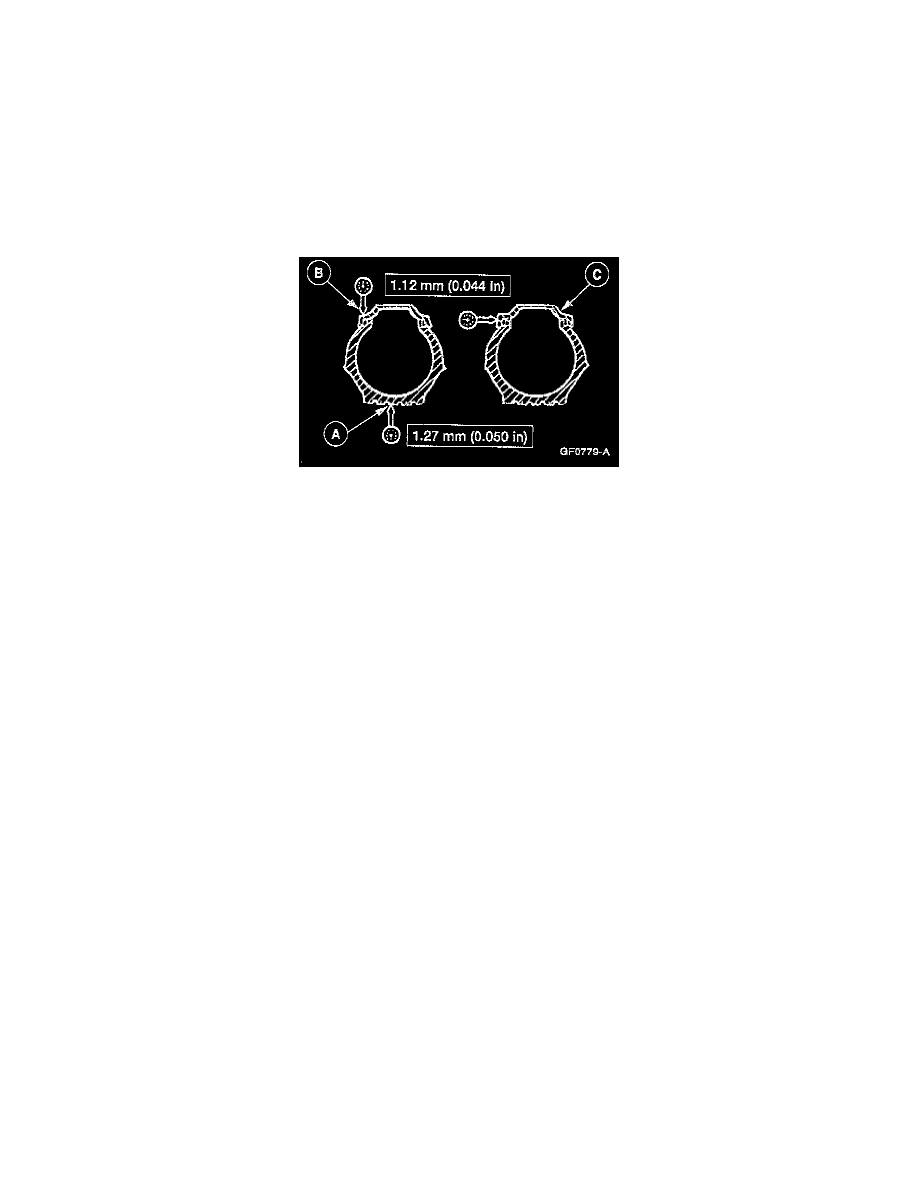F 150 2WD Pickup V8-4.6L CNG SOHC VIN 9 (1997)

Wheels: Component Tests and General Diagnostics
Runout
TEST DESCRIPTION
Excessive radial and lateral runout of a wheel and tire assembly can cause roughness, vibration, wheel tramp, tire wear, and steering wheel tremor.
Before checking runout and to avoid false readings caused by temporary flat spots in the tires, check runout only after the vehicle has been driven far
enough to warm tires.
The extent of the runout is measured with Radial Runout Gauge. All measurements are made on the vehicle with the tires inflated to recommended
inflation pressures and with the front wheel bearings adjusted to specifications.
TIRE RUNOUT
Use Radial Runout Gauge to measure (A) radial runout of the tire at the center and outside ribs of the tread face. Mark the high points of radial runout
for future reference. Radial runout should not exceed specifications.
WHEEL RUNOUT
Measure (B) radial and (C) lateral wheel runout at the positions shown in the illustration. Runout should not exceed specifications.
Wheel Centering 0-Ring Seal
The front hub and rear axle wheel pilots are fitted with rubber O-rings which help center the wheels. Remove the O-ring and clean the machined groove
and clean and lubricate the O-ring if required. Replace the O-ring if damaged. O-rings should be pulled on (not pushed) so that the yellow paint
identification stripe is visible after installation.
Road Test
A tire vibration diagnostic procedure always begins with a road test. The road test and customer interview (if available) will provide much of the
information needed to find the source of a vibration.
During the road test, drive the vehicle on a road that is smooth and free of undulations. If vibration is apparent, note and record the following:
^
The speed at which the vibration occurs.
^
What type of vibration occurs in each speed range-mechanical or audible.
^
How the vibration is affected by changes in vehicle speed, engine speed, and engine torque.
^
Type of vibration sensitivity-torque sensitive, vehicle speed sensitive, or engine speed sensitive.
Use the following explanation of terms to help isolate the source of the vibration.
Torque Sensitive
The condition can be improved or worsened by accelerating, decelerating, coasting, maintaining a steady vehicle speed and application of engine
torque.
Vehicle Speed Sensitive
The vibration always occurs at the same vehicle speed and is not affected by engine torque, engine speed, or transmission gear selection.
Engine Speed Sensitive
The vibration occurs at varying vehicle speeds when a different transmission gear is selected. It can sometimes be isolated by increasing or
decreasing engine speed with the transmission in NEUTRAL, or by stall testing with the transmission in gear. If the condition is engine-speed
sensitive, the condition is not related to tires.
If the road test indicates the vibration is related to the tires or wheels, refer to Pinpoint Test G under suspension testing and inspection. See:
Steering and Suspension/Suspension/Testing and Inspection/Pinpoint Tests/G
